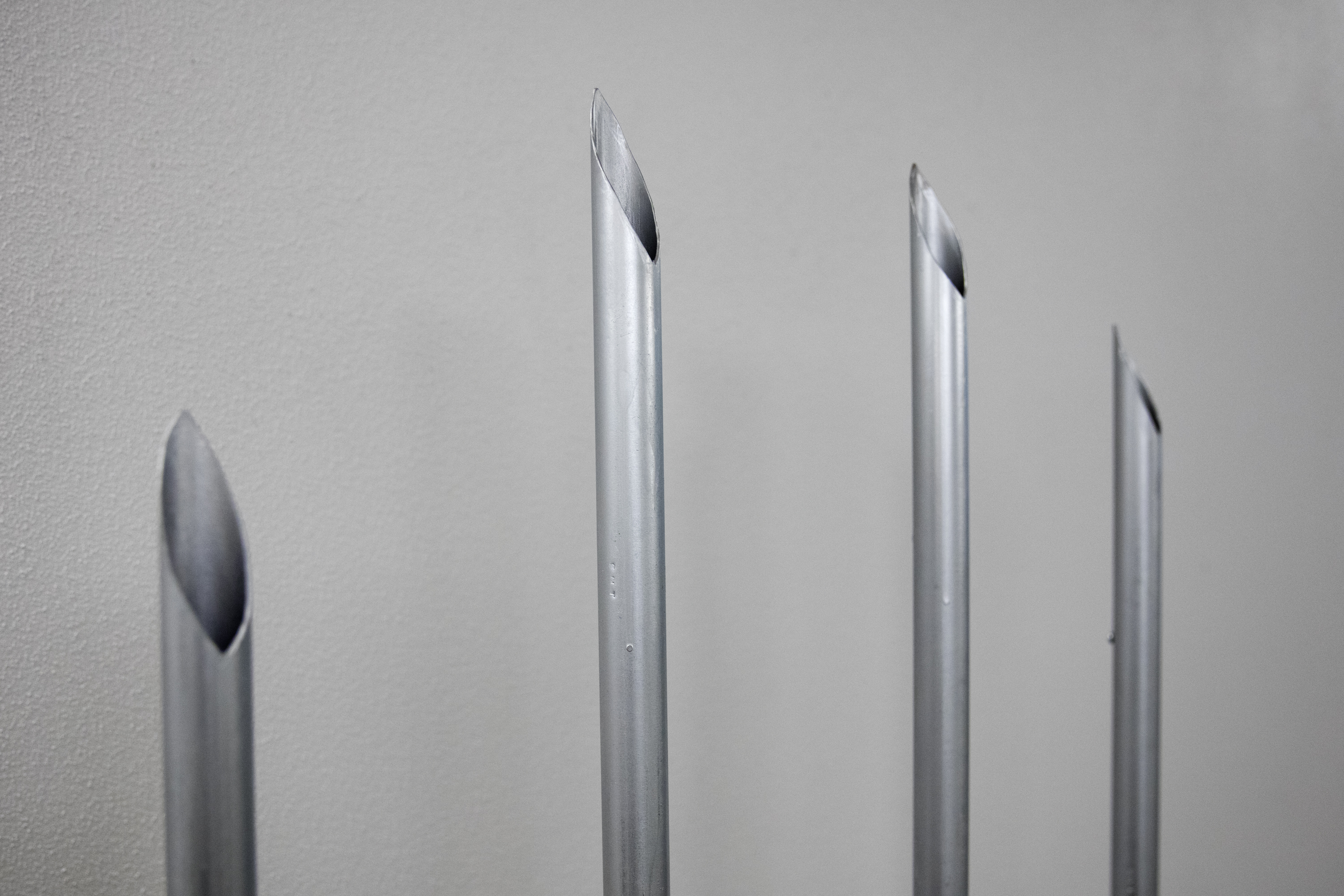SubZeroArt presents “Transmissions,” a new installation that reflects on sound art
Every year since 2009, Art Souterrain has aimed at making visual art more accessible to the public by bringing it out of its traditional places of exhibition. The festival puts the spotlight on international contemporary art as well as the architectural and cultural heritage of downtown Montreal’s underground city.

Annoying sizzling sounds, metallic bars and black bases—not your average conception of traditional artwork. Yet “Transmissions” falls perfectly into the theme of this year’s eighth edition of Art Souterrain, “Must Art be Appealing?”
Transmissions presents itself as a combination of installation and human interaction. The exhibit lingers over the relationship between noise and art by trying to redefine the artistic definition of noise. Four sets of antennae-like metallic spires take up the space of this underground hallway by drawing a horizontal line that is either disruptive or intriguing to bystanders. The closer you get to this weird futuristic installation, the clearer is the whistle of this ultrasound version of 1984’s Big Brother—it’s as if those tubes were dissecting your every move.
Behind the installation is SubZeroArts, a group founded in 2009 by a collective of visualists, sound artists, technologists, fabricators and software engineers who share a common interest in contemporary art and science. No wonder the main material used by the artists—naturally occurring white noise—is derived from physics. White noise includes all of the frequencies of sound someone can hear but chooses to shut down when there is just too much of it. White noise can be, say, the sum of every little sound bugging you when you are trying to finish a paper at the library. The intensity of the sounds has to be uniform though. Surprisingly, white noise is also used to mask other annoying sounds.
SubZeroArts uses the metallic antennae to capture this white noise and sounds hidden within silence and lost radio signals to create a new public playground.
“In making Transmissions, we wanted the audience to have an aurally based experience using sounds that exist around us but remain naturally filtered by our senses, so they normally go unnoticed,” SubZeroArts founder Dean Hughes said in an email interview. “By immersing the audience in these unheard sounds, we’re inviting them to explore a more amplified, more unfiltered aural environment that they wouldn’t normally have the opportunity to take part in.”
Speaking of senses, you might find it challenging to witness yours awakened by the inconsistent rhythm of those sounds whose epicenter seemed impossible to find. It is nonetheless likely that adepts of Luigi Russolo’s pioneer work on making art from city noises would relate to this exhibition, which could certainly be a nod to the futurist painter’s The Art of Noises manifesto. Transmissions is not the group’s first experiment which uses technology to innovate and involve the public into an art installation, as the interactive Touchcubes installation was part of Art Souterrain’s 2015 edition. Among other pieces, SubZeroArts also produced a large-format multimedia piece at Montreal’s Muteck Electronic Festival and all-headphones concert series at Gallery 1313 in Toronto.
Curator, artistic and general director of Art Souterrain Frédéric Loury felt that Transmissions perfectly summed up the four subtopics related to the theme of the festival, which are aesthetic language, sarcasm, conceptual art and subversive art. “The neutral approach of the artists is what drew our attention to this installation. Using this white noise meant people would not be able to fully relate to it as they would to any sound installation. That is what interested us, that people would be taken aback,” Loury said. “SubZeroArts uses tubes almost like a pipe organ. When you get closer, the sound might fade out. You may feel drawn to it, then frustrated, which would leave you especially cautious.”
Sound art is known as an artistic and hybrid discipline where sound is used as a medium. One of the specific features of sound art is the relation between space and time, which is prevalent in the installation. Since the artists’ source material is traditionally considered an unpleasant noise rather than an actual sound, Maclean and Hughes thought Art Souterrain would be the perfect venue to present Transmissions.
Besides asking the audience to reconsider the space that they exist in, SubZeroArts is also asking them to reflect on the appeal of both the installation and the aural reality surrounding them, as explained by artist Rik Maclean.
One of the frustrating drawbacks of such a neutral approach is that it leaves little room for creativity and artistic implication. It seems that every uncluttered piece that falls into the category of contemporary art likes to hide behind minimalism and active audience participation. Transmissions ends up revealing itself as a scientific experiment rather than an artistic work. Questioning seduction and its criteria within art and our society is a fascinating topic, yet the lack of additional elements to SubZeroArts’s stretching of the limits of sound didn’t come off entirely convincing.
Transmissions might not be everyone’s cup of tea, but it definitely questions the definition of artwork while successfully transposing the festival’s theme—“Must Art be Appealing?”—into an installation.
“Transmissions” will be on display at the Place de la Cité Internationale until March 20 as part of Art Souterrain, the contemporary art festival.



